Biochar: Can Adding Charcoal to Soils Absorb CO₂?
5 minute read
Updated on: 24 Jul 2021

Biochar is a type of charcoal that is added to soils to increase the amount of carbon dioxide stored inside them .
We can get biochar from heating plant and animal matter in the absence of oxygen. Potential sources include :
- Crop waste left over after harvest
- Forestry waste
- Animal manure
- Plants grown specifically for biochar
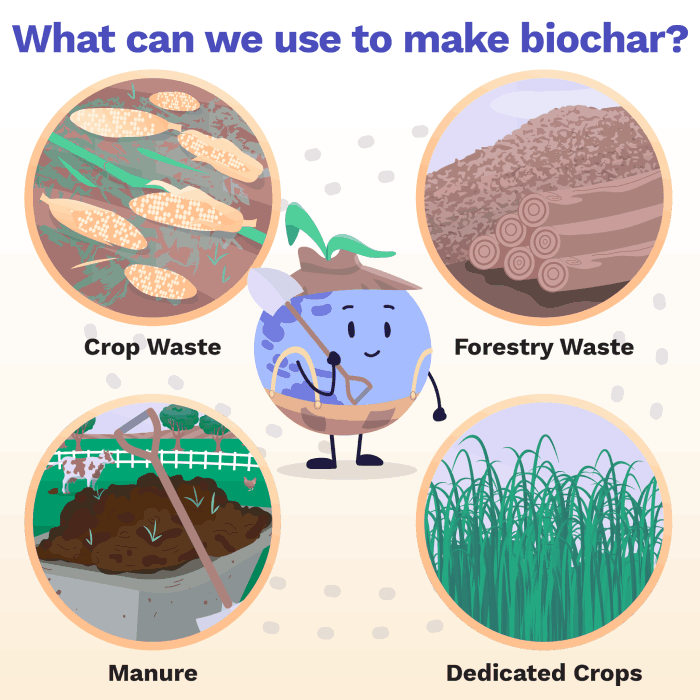
Biomass used for Biochar
How does it work?
The plants used to make biochar absorb carbon dioxide from the atmosphere through photosynthesis . When they are heated without oxygen, the carbon in their stems, leaves, and roots is converted into charcoal. This can then be added to the soil, where it remains stored for hundreds of years
.
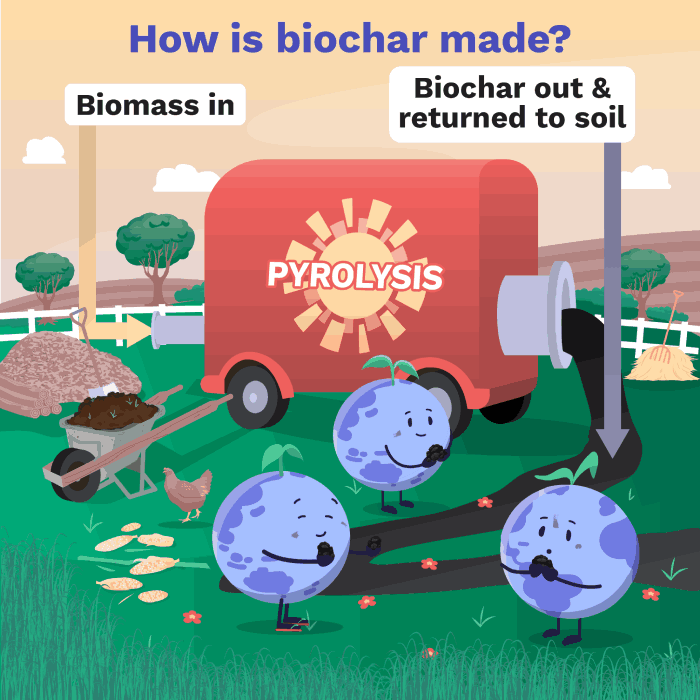
Biochar as a carbon sink
What are the other impacts of biochar?
After adding biochar to soils, crop yields increase by 10% on average . However, there is a lot of variation and sometimes crop yields even decrease! The exact effects depend on many factors, including the type of crop and type of soil (such as how big the soil particles are, and whether the soil is acidic)
.
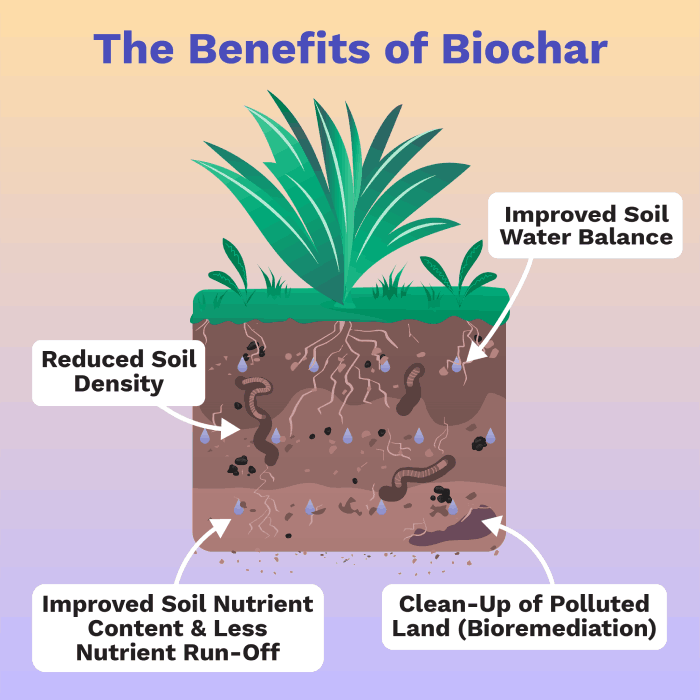
Biochar has some surprising benefits
However, there are some downsides to using biochar as well.
Tiny biochar particles may be released into the atmosphere while it is being made, moved around or spread on soils . These particles of black carbon can be dangerous for human health if inhaled and also contribute to global warming
.
What’s more, molecules that can cause cancer are released when biochar is made and can end up in the food we grow from the char-covered soil . To reduce the risk of cancer, it is recommended that no more than 20 tonnes of biochar is added per hectare of land
.
In general, we need more research to find out exactly what the health risks of using biochar are .
What limits how much biochar we can use?
Biochar can be made sustainably from plant or animal waste, but there are limits to how much waste is available . We could make much more by growing plants specifically for biochar, but this comes with its own problems
.
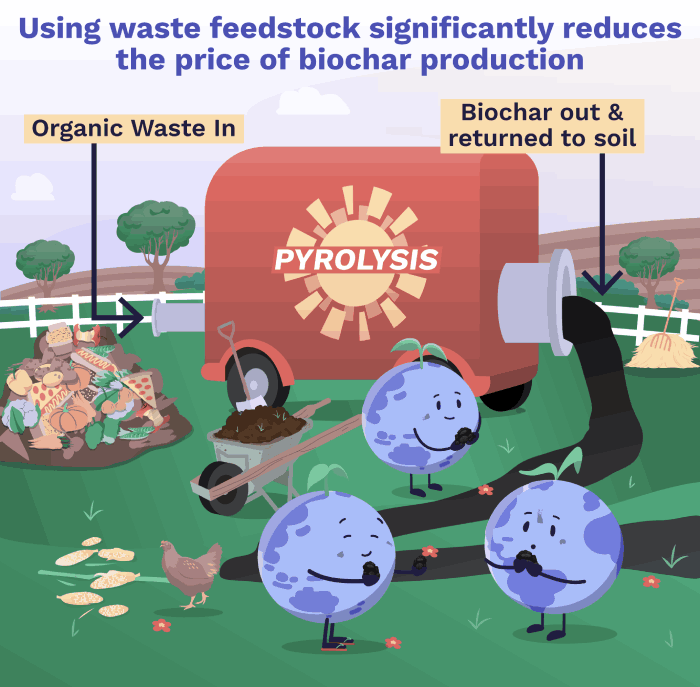
Biochar made from waste is much cheaper
How much will it cost?
Currently, biochar is not widely used because it is too expensive .
The lowest estimate of US$30 per tonne is much higher than the lowest estimates for planting trees (US$2) and soil management (US$0) we looked at in previous chapters .
However, biochar might become cheaper as the technology for making it becomes more widespread .
How much CO₂ can it remove?
There is a wide range of estimates for how much CO₂ biochar can remove, ranging from 0.3-6.1 GtCO₂ a year; this largely depends on how much plant material is available to make it .
We also need to think about how long the effects will last. To be an effective carbon store, biochar needs to stay in the soil for as long as possible.
Biochar is thought to be able to stay in the soil for centuries , although this depends on soil conditions
such as soil temperature
and pH (acidity)
. When soils are hot and acidic, biochar storage is more short-term
.
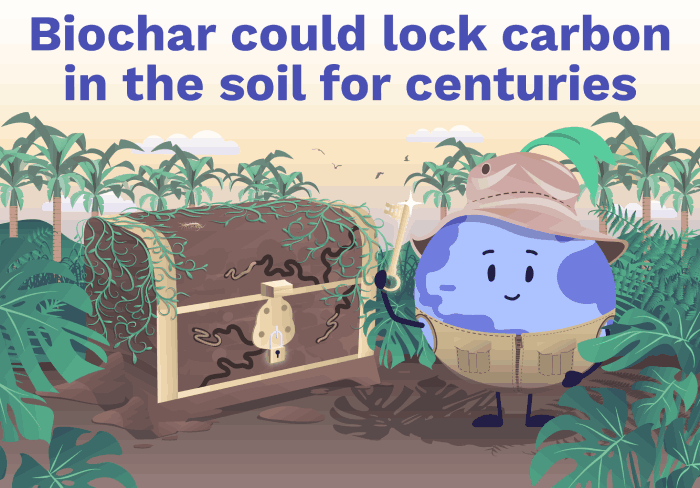
Biochar storage potential
Conclusions
Biochar could provide a more permanent method for carbon storage than other soil carbon sequestration methods . However, more research is needed to work out which soils are best to use, and to assess the health risks it could bring.
So far we’ve looked at how solutions based on living things can remove CO₂ from the atmosphere. In the next chapter, we’ll look at how rocks can also act as carbon sinks.
Next Chapter